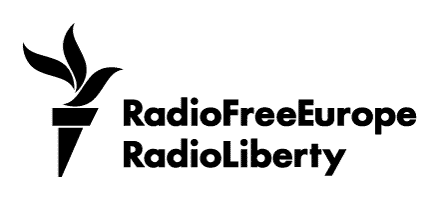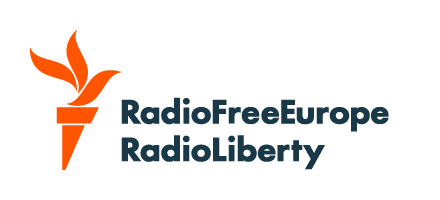Early each morning, men converge in the side streets of Uzbekistan's thousands of neighborhoods, locally known as "mahalla," to converse and partake from platters of traditional Uzbek "osh," a national pilaf dish, and drink green tea, all prepared with ingredients provided by each individual mahalla. Such group activity not only provides the inhabitants of the mahalla with the public goods the state is sometimes unable to provide, but helps to create order, to promote solidarity, and to sustain community life. RFE/RL correspondent Charles Carlson reports on a recently adopted program designed to increase the role of the mahalla as well as some controversies surrounding this institution.
Prague, 24 February 2003 (RFE/RL) -- Earlier this month on 7 February, the cabinet of ministers of Uzbekistan issued a resolution proclaiming 2003 as "The Year of the Mahalla."
The program was originally announced in December by President Islam Karimov as a way of strengthening the mahalla as a component of civil society. The measure hopes to create 160,000 new jobs, primarily in the service and trade sectors, increase assistance to impoverished families, and improve medical and recreational facilities.
The modern mahalla can trace its origins to large urban centers that existed in Central Asia well before the invasion of Chingiz (Ghengis) Khan in the 13th century. Many of them specialized in specific trades such as metalworking, music, or food production.
There are nearly 10,000 mahalla in Uzbekistan today, each one averaging roughly 2,000 residents. In the cities, mahalla consist of modern apartment complexes or blocks of densely organized pre-Soviet single-family dwellings. Membership in the mahalla is based on residency, and no one is excluded because of class, profession, or religion. Traditionally the mahalla are places where both Sunni and Shi'ite, rich and poor, laborers, and professional people can interact with one another.
In the modern mahalla, a chairperson leads the mahalla committee, or "kengash." The kengash oversees the day-to-day activities of the mahalla.
According to a 1999 law, the chairperson is a state employee who is elected for a 30-month term. Next in the hierarchy is an "aksaqal" or "whitebeard," who is chosen informally by consensus for his wisdom and ability to guide. The wealthy comprise a third authority. Finally, a senior mahalla woman also assumes an informal leadership role.
The mahalla is a primary source of social services for community residents. Members of the mahalla call on each other for help. When the state is unable to provide employment, the mahalla often provide the basics necessities needed to maintain the family.
Beginning in the late 1980s, and intensifying in the 1990s, the Uzbek mahalla became the centerpiece of a state-sponsored campaign to transfer responsibilities for welfare and other social services onto local shoulders. In the process, the mahalla has increasingly taken on the feel of a government office.
Uzbeks differ in their opinions of Karimov's designation of 2003 as the Year of the Mahalla. One woman suggests the purpose was to increase individuals' responsibility for how the mahalla functions:
"The purpose is to make every person, every citizen, keep his mahalla tidy. Therefore, our president [Karimov] declared this year as year of mahalla."
But a local journalist disagrees. He thinks the purpose of this step of the Uzbek government is to strengthen control over the population:
"The purpose is not to make mahallas better and cleaner. In the past, there was one district inspector, militiaman, for two to three mahallas. Nowadays two to three inspectors are not enough for one mahalla. If there are 100 inhabitants in one mahalla, 30 of them are "pospons" [in charge of security], 20 of them are "quloqs" [who collaborate with security officials]. It's very difficult for an individual to break that net [and be independent.]"
The attempt to use the mahalla to fulfill at least some of the functions of local government has changed both the institution of the mahalla and people's attitudes towards it, and blurred the dividing line between the community and the state. Eric Sievers, a U.S. scholar who has made an extensive study of the mahalla, says the mahalla is more an instrument of government, not an organ of civil society: "As far as civil society is concerned, this 'mahallization' of Uzbekistan is really not a civil society: mahalla are becoming increasingly under the control of district, government, and also national administrative agencies; and so it is really misleading to call the "Year of the Mahalla" program a civil society; it's just the opposite."
Moreover, different interest groups are trying to use the mahalla to promote their own agendas. Islamists see the mahalla as the engine to revive Islamic culture, while Westerners interested in civil society try to recast the mahalla as nongovernmental organizations. The UN commission on Human Rights plans for several thousand mahalla to build human rights awareness. Those interested in women's issues embrace the women's communities that exist in many mahalla. Those active in economic issues rely on the mahalla to administer small businesses.
(The word mahalla, a collective noun of Arabic origin, means "city neighborhood" in Uzbek, but when used in its adjectival form it simply means "local.")
Prague, 24 February 2003 (RFE/RL) -- Earlier this month on 7 February, the cabinet of ministers of Uzbekistan issued a resolution proclaiming 2003 as "The Year of the Mahalla."
The program was originally announced in December by President Islam Karimov as a way of strengthening the mahalla as a component of civil society. The measure hopes to create 160,000 new jobs, primarily in the service and trade sectors, increase assistance to impoverished families, and improve medical and recreational facilities.
The modern mahalla can trace its origins to large urban centers that existed in Central Asia well before the invasion of Chingiz (Ghengis) Khan in the 13th century. Many of them specialized in specific trades such as metalworking, music, or food production.
There are nearly 10,000 mahalla in Uzbekistan today, each one averaging roughly 2,000 residents. In the cities, mahalla consist of modern apartment complexes or blocks of densely organized pre-Soviet single-family dwellings. Membership in the mahalla is based on residency, and no one is excluded because of class, profession, or religion. Traditionally the mahalla are places where both Sunni and Shi'ite, rich and poor, laborers, and professional people can interact with one another.
In the modern mahalla, a chairperson leads the mahalla committee, or "kengash." The kengash oversees the day-to-day activities of the mahalla.
According to a 1999 law, the chairperson is a state employee who is elected for a 30-month term. Next in the hierarchy is an "aksaqal" or "whitebeard," who is chosen informally by consensus for his wisdom and ability to guide. The wealthy comprise a third authority. Finally, a senior mahalla woman also assumes an informal leadership role.
The mahalla is a primary source of social services for community residents. Members of the mahalla call on each other for help. When the state is unable to provide employment, the mahalla often provide the basics necessities needed to maintain the family.
Beginning in the late 1980s, and intensifying in the 1990s, the Uzbek mahalla became the centerpiece of a state-sponsored campaign to transfer responsibilities for welfare and other social services onto local shoulders. In the process, the mahalla has increasingly taken on the feel of a government office.
Uzbeks differ in their opinions of Karimov's designation of 2003 as the Year of the Mahalla. One woman suggests the purpose was to increase individuals' responsibility for how the mahalla functions:
"The purpose is to make every person, every citizen, keep his mahalla tidy. Therefore, our president [Karimov] declared this year as year of mahalla."
But a local journalist disagrees. He thinks the purpose of this step of the Uzbek government is to strengthen control over the population:
"The purpose is not to make mahallas better and cleaner. In the past, there was one district inspector, militiaman, for two to three mahallas. Nowadays two to three inspectors are not enough for one mahalla. If there are 100 inhabitants in one mahalla, 30 of them are "pospons" [in charge of security], 20 of them are "quloqs" [who collaborate with security officials]. It's very difficult for an individual to break that net [and be independent.]"
The attempt to use the mahalla to fulfill at least some of the functions of local government has changed both the institution of the mahalla and people's attitudes towards it, and blurred the dividing line between the community and the state. Eric Sievers, a U.S. scholar who has made an extensive study of the mahalla, says the mahalla is more an instrument of government, not an organ of civil society: "As far as civil society is concerned, this 'mahallization' of Uzbekistan is really not a civil society: mahalla are becoming increasingly under the control of district, government, and also national administrative agencies; and so it is really misleading to call the "Year of the Mahalla" program a civil society; it's just the opposite."
Moreover, different interest groups are trying to use the mahalla to promote their own agendas. Islamists see the mahalla as the engine to revive Islamic culture, while Westerners interested in civil society try to recast the mahalla as nongovernmental organizations. The UN commission on Human Rights plans for several thousand mahalla to build human rights awareness. Those interested in women's issues embrace the women's communities that exist in many mahalla. Those active in economic issues rely on the mahalla to administer small businesses.
(The word mahalla, a collective noun of Arabic origin, means "city neighborhood" in Uzbek, but when used in its adjectival form it simply means "local.")




